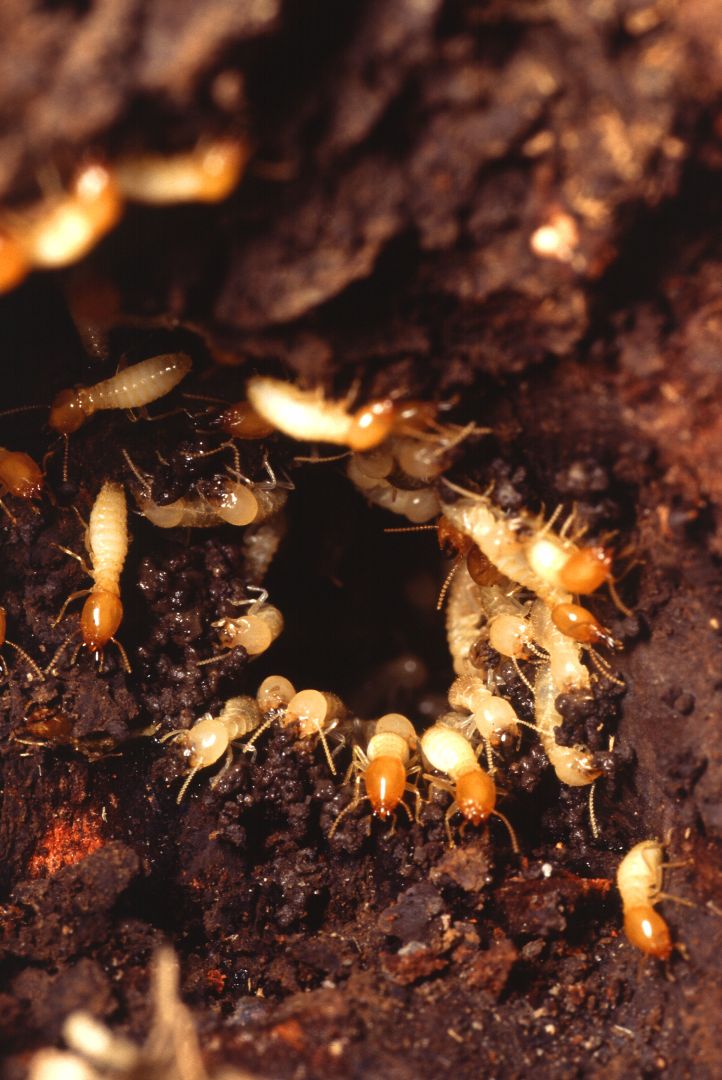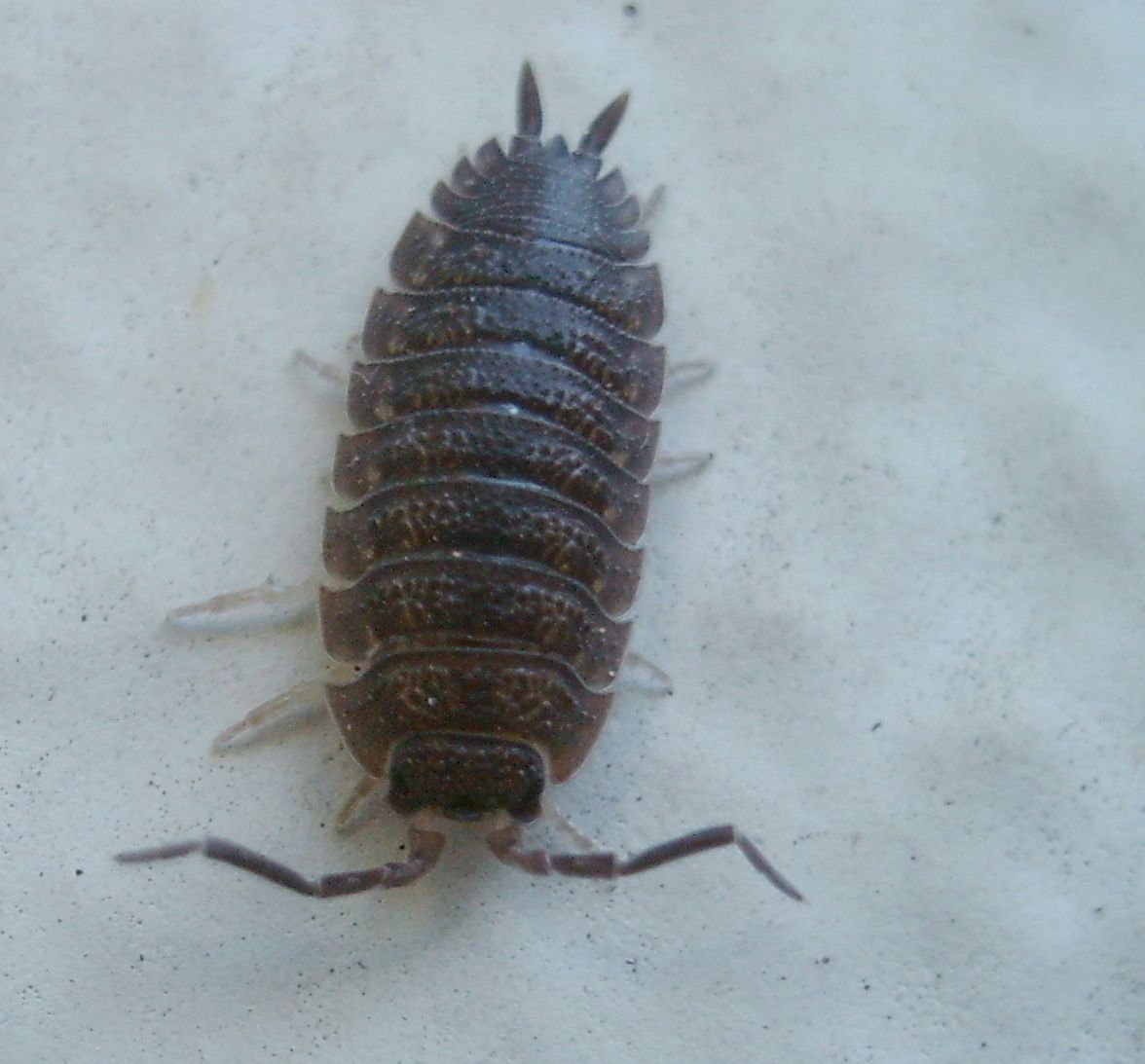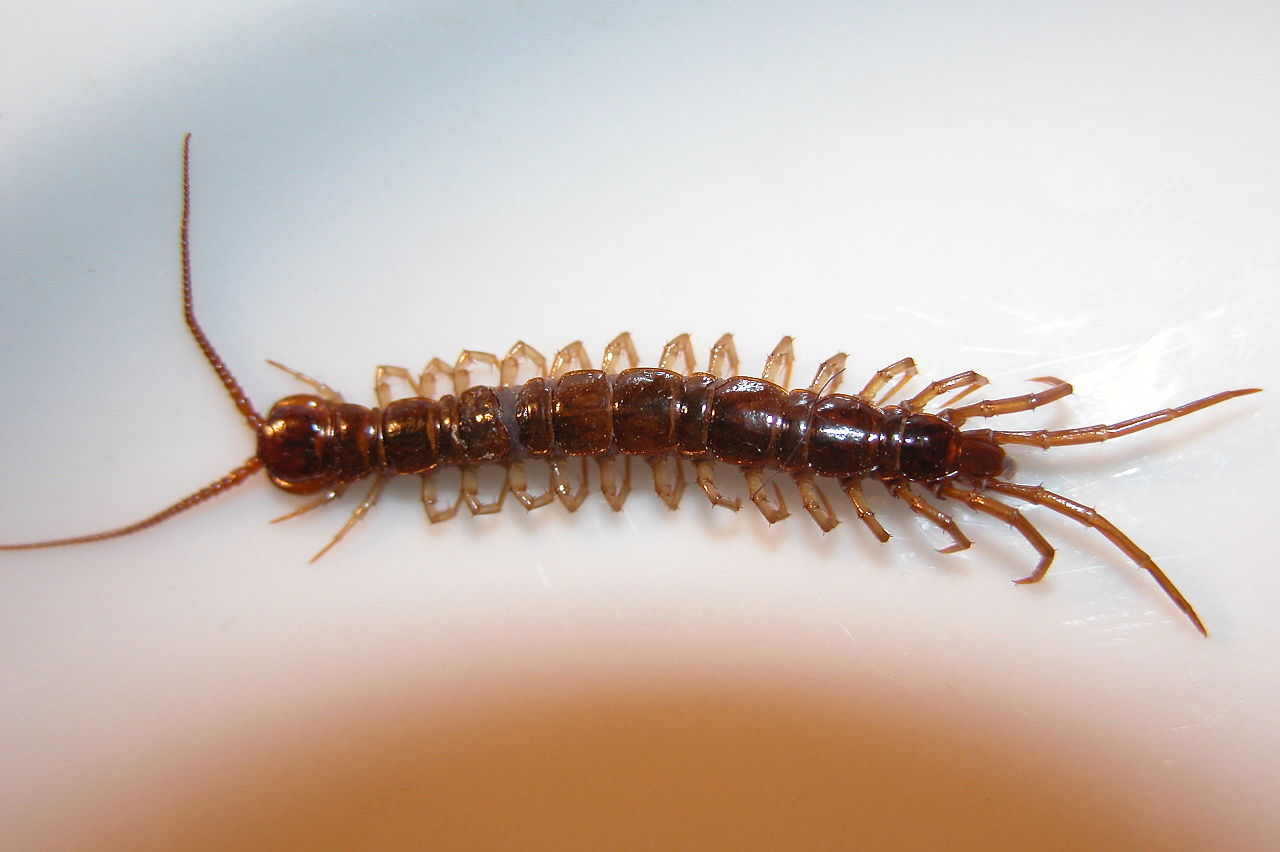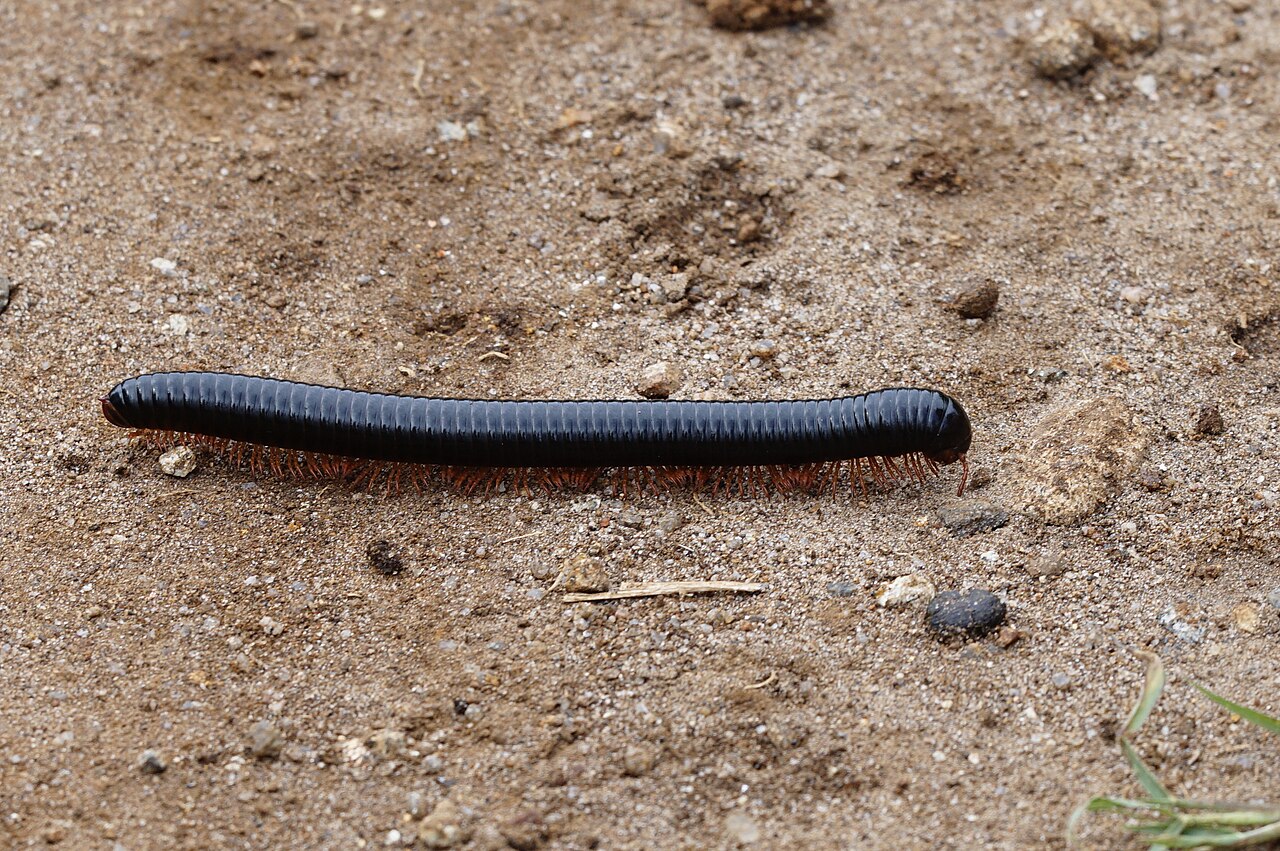Tens of species of bugs can be found in basements. The period between March and September is known for high bug activity in this area of the house.
Some bugs may even survive throughout the year in basements. They can take advantage of high moisture and the presence of other species of bugs as food.
Basements tend to attract nocturnal bugs that love moisture. Most species make their way into basements on their own while others (such as fleas) make their way to basements on a host (such as a pet).
Table of Contents
Why Are There Bugs in Your Basement?
Bugs enter basements for shelter and food. This is a specific microclimate that isn’t as busy as the rest of the house which means bugs can mate without much human interference.
Food
Food is the primary reason bugs deliberately enter basements. This can be a type of stored fruit or vegetable. Other species of bugs here are also seen as food by bugs entering basements.
A few common species of bugs may also see the basement as a place with atypical food such as cardboard or stored boxes or mold caused by high humidity.
Shelter
Bugs also enter homes to seek out shelter. This is an area that has a constant temperature and which also provides the food needed to survive.
Bugs may enter basements in larger numbers in the period from September to November, known for temperature drops in temperate climates.
High humidity
High humidity is a problem in many basements. Poor ventilation or possible leaks increase humidity levels here.
Small windows which are never open facilitate constant humidity many species of bugs like,
Cracks in walls and foundation
Cracks in walls as well as gaps around windows and doors facilitate entryways for bugs into basements.
Even a small crack in a wall can be sufficient for species such as ants to make it indoors.
22 Bugs in the Basement
The following species of bugs are common in basements. They have their feeding preferences and getting rid of them often involves eliminating their food source.
1. Termites

Termites are some of the most common types of bugs in basements and are a reason for concern inside homes. Known to live throughout the year, termites make it into basements for food.
Damp wood is one of the main reasons you can find termites in your basements. You might take them for ants at first, but there are a few ways to tell them apart.
Ants have sculpted bodies which helps them loom slender while termites shave a wide body that isn’t thread-like and narrowed at the waist.
Termites also have straight antennae while ants have bent antennae.
It’s time to call an exterminator when you confirm termites in your home.
These pests can enter homes by flying into an area with damp wood. Finding the humidity source in your basement is one of the ways termites can be removed.
Water leaks and damaged wood are among the first reasons termites enter basements and stay there by nesting, often a satellite nest to a nearby original nest.
2. Ants

You can differentiate ants from termites by their sculpted bodies and long legs. Termites have short legs and thick bodies. Ants are also interested in food and moisture.
Open food in the basement is one of the first reasons for ants to get in.
This includes foods rich in sugars such as fruits. However, ants may still each starchy foods and different other types of food which helps them survive whenever they can’t find suitable food indoors.
A swift drop in temperature may also make ants enter homes in the summer.
Carpenter ants might also be interested in nesting in damaged wood in your home and making it into basements.
Ants are first eliminated by taking out all open food in the house and the basement. Sealing all entry points which are often tiny is also advisable to keep these small insects out.
3. Spiders

Spiders love areas with plenty of clutter such as basements. They have quick escape routes by hiding behind furniture, old bags of clothes, shoes, and other stored goods.
These undisturbed areas also breed grounds for various insects spiders eat. As a result, they make it indoors where they eat and breed.
Spiders are also present in basements whenever there are dramatic changes in weather and humidity. They seek shelter and they escape extreme temperatures by moving indoors, preferably into cluttered areas.
Frequent cleaning is one of the main methods to keep spiders out.
Vacuuming, sweeping, and dusting the basement are among the first preventive measures against spiders.
Outside of the house, you also need to trim vegetation and clear out areas of stored wood, also known to attract spiders.
Spiders can also be a sign your basement, home, or property has plenty of bugs and insects which are seen as food.
4. Cockroaches

Cockroaches might be present in basements with high humidity and warmth. They might also need organic food but some roaches eat almost anything.
Even old cardboard or cardboard affected by moisture can be eaten by roaches hiding in the basement.
American cockroaches are some of the most common species in US homes. These large bugs are rarely along.
Seeing only one cockroach in the house signals the presence of tens or hundreds of other bugs in the house as well.
You may find them hiding under furniture, clutter, or in other areas that are hard to reach, such as in air vents or behind warm washers.
American cockroaches are among the most common types of bugs in homes.
Keeping them away involves eliminating high moisture in basements by proper ventilation and by using dehumidifiers.
American cockroaches are also deterred by a space where there’s no food. Storing all of your basement goods in sealed plastic boxes and not keeping foods out in the open are preventive methods against roaches.
Humidity levels also need to be controlled outside of the house. Puddling water or excessive mulch that always keeps soil wet in the garden is bound to attract roaches.
Make sure your yard has good drainage systems together with your lawn so that roaches have no real reasons to get around the house in the first place.
5. Crickets

Crickets are some of the bugs which may seem similar to cockroaches in the reasons they get indoors and in recommended preventive measures.
High moisture as well as swift changes in weather triggers crickets to get indoors.
Unlike cockroaches, crickets rarely invade homes in large numbers as a solitary species.
Crickets move indoors for food such as insect larvae as well as various types of plants. Fruits may also be consumed in the basements by crickets that make it indoors.
You can find crickets easily make their way into the basement if you have untrimmed vegetation around the house.
Tall shrubs and grasses attract crickets around the house and from here, they might enter homes attracted to light or food. They might also be running away from cold weather and extremely rainy weather.
Cockroaches can be vacuumed and discarded, unlike cockroaches which require more thorough cleaning and uncovering their nest inside the basement.
6. Camel Crickets

Camel crickets are the bright color version of crickets common in the United States.
These types of crickets cannot chirp but they are also interested in areas of high moisture, plants, fruits, and small insects or their larvae.
Camel crickets don’t have wings and they hop around from one location to another.
They may it into basements through openings and cracks, mainly at night.
While not a real pest to humans, the presence of these bugs in homes can be annoying.
You can remove these bugs by hand as they don’t bite. Sweeping and vacuuming
camel crickets are also viable methods to carry them out of the house.
Most bugs of this type will try to make a quick escape whenever they see humans. Growing up to a size of 33mm, these bugs can jump distances a few times their length.
7. Isopods

There are over 1.000 species of isopods around the world, each with a different habitat and diet. Some isopods are purely aquatic while others are terrestrial and may enter homes.
Some people know isopods for their ability to curl into a ball. This allows them to defend themselves properly so that they even don’t look like typical prey to their predators.
Isopods don’t do any real harm to homes and they only survive up to a few days indoors as well.
Some of the most prevalent species tend to gather in moist areas around the house and then enter homes by accident or when looking for food.
All types of plant material are eaten by isopods. They can also eat animal waste.
Eliminating them from the house is also eliminating them from the immediate outdoor area. You need to clean the areas where animals or livestock live and clear piling vegetation such as decaying leaves around the house.
Areas of the garden used to create compost also attract isopods. Make sure you’re isolating this area properly if you’re making your gardening compost at home to keep the bugs out.
8. Silverfish

Another species that loves moisture and enters homes is silverfish. Unlike isopods that die within a few days, silverfish can live long indoors, particularly in basements and bathrooms.
You can identify these bugs but their elongated bodies of gray to silver coloring. The body tapers at the end.
Most silverfish never reach a size of 1 inch but they might still be seen moving around the basement floor, especially when you turn on the lights as these bugs only come out when it’s dark.
The problem with silverfish is they can eat anything, including paper and soap. They prefer foods rich in carbohydrates and protein the most, however.
All types of organic material buildup can be eaten by these bugs.
The more clutter you have in the basement the more food options there are for the species to feed and survive on.
These bugs can survive for almost a year indoors, if not more with sufficient food and moisture.
Clearing all clutter and reducing indoor air humidity are among the first steps to consider to keep the species out.
9. Earwigs

You can identify earwigs by their dark brown coloring and by their long pincers.
These are a species of bugs known for their off-putting appearance, mainly due to their visible pincers which are the subject of multiple myths.
These pincers aren’t used on humans. Earwigs like plant material as well as eating soft-bodied prey such as invertebrates.
Earwigs also like cool humid places such as basements.
A problem with earwigs in the basement is mostly a problem with earwigs around the house and in the garden.
These bugs travel short distances and this means their source is somewhere next to the house.
Piles of compost, dead leaves, and tall vegetation that keeps a humid moist soil are among the first places to look for the bug.
Earwigs are also a constant presence under flower and garden mulch.
You may need to clear all of these organic materials around the house to get rid of earwigs in the basement, together with reducing indoor humidity.
Earwigs enter homes by accident but may stay there if there’s humidity and food such as plants and other bugs and invertebrates.
10. Springtails
Tiny brown, gray, or black elongated bugs in the basement might be springtails. The presence of these bugs signals a potential health risk in the house.
Springtails love high humidity. Even more, they like mold and mildew formed in areas with high humidity.
Clearing these bugs out of the basement involves looking for possible mold problems and clearing them.
Water leaks and poor ventilation are among the first reasons springtails are even seen in the house.
While a secondary cause, plant materials or stored fruits and vegetables in the basement may also attract these bugs.
As with earwigs, these bugs tend to make their appearance in early summer. It’s a good time to clear all clutter in the basement in the spring and to also assess air quality and air humidity levels.
11. Booklice

Springtails and booklice share some of their main reasons for being in the basement.
The biggest difference between these species is that booklice are smaller and sometimes not even visible to the naked eye.
They grow to a size of around 1mm which means they’re a few times smaller than springtails.
However, booklice also love high humidity, mold, dust, and fungi growing on walls, shelves, boxes, and books.
Both booklice and springtails make their presence felt from late spring up to late fall.
Warmth is needed alongside humidity for these bugs to make their appearance.
Eliminating these bugs from the basement requires plenty of diligence to check humidity issues such as small water leaks.
Even the smallest water leak with sporadic water dripping can lead to humidity in the basement, an area that may already suffer from poor ventilation and favor mold and fungi formation.
12. Mosquitoes

Mosquitoes are often found around the house, in basements, and the house.
They first appear in March. The time of the year mosquitoes appear depends on temperature.
It should be at least 50 degrees Fahrenheit for mosquitoes to make their appearance in early spring. Ideally, mosquitoes prefer temperatures of up to 80 degrees.
These are the type of insects that love high humidity in the basement as well as the sheltered nature of man-made structures that keep them warm at night.
Mosquitoes need blood to survive. They can easily fly away from the basement into the home to bite.
Dealing with mosquitoes takes time and humidity needs to be reduced. These stinging insects in basements also need water to lay eggs.
They may lay eggs on the moist surface in the basement in the absence of puddling water or moist soil around the house.
13. Scorpions

Scorpions might be tempted to enter homes to avoid dehydration and to seek out insects and bugs to eat.
Basements tend to offer plenty of bugs for scorpions to stay around for more than a few days.
Scorpions are some of the most dangerous creatures in the basement as they are venomous.
Dealing with scorpions is possible, but not by direct contact. Sweeping them is one of the ways to get them out of the house.
Eliminating all bugs and even mammals such as rodents from basements is mandatory to keep food options low.
Dealing with all gaps and cracks in walls or around doors and windows is also recommended as scorpions can’t enter a basement without some type of large gap under doors or cracks in walls.
14. Pseudoscorpions

A species highly similar to scorpions, pseudoscorpions aren’t as harmful to humans.
However, they look like scorpions with their long pincers and their red-amber coloring.
These creatures enter basements looking for food. Constantly looking for food is one of the traits of pseudoscorpions.
They enter homes looking for insects such as flies and ants. Even larvae can serve as food for pseudoscorpions.
Eliminating all of the bugs and larvae in the basement is one of the methods of eliminating the risks of having them in your house.
Clearing out all animal nests outside of the house is also recommended as these shelter various bugs and insects pseudoscorpions eat.
15. Gnats

Some species of gnats can bite. You can find no-see-ums are known for their tiny bites on exposed areas of the skin.
Gnats can bite multiple times which means they need to be eliminated from the basement as they can make their way into all other areas of the house.
You can find these types of flies are seen around basements in the summer, particularly in the first half of the day.
It’s always a good idea to clear out all plants, especially dead plants from the basement and around the house to keep these flies out.
Adding window mesh screens on the windows of your basement is also one of the methods to keep these insects out.
16. Fruit Flies

While similar to gnats, fruit flies aren’t keen on eating fungi and plants, as they like sugary foods such as fruit.
Basements are often used as storage areas for fruits. Fresh fruit may only attract a small number of flies and bugs.
Decaying fruit attracts fruit flies. Make sure you always check the fruit stored in your basement to throw out all fruit going bad.
Fruit that can be stored over longer periods such as apples is often found in basements. The sugar in apples can attract fruit flies.
Rotting fruit around the house and in the garden also attracts fruit flies. Make sure you clear all fallen fruit from around the house to avoid having a fruit fly problem indoors.
17. Centipedes

Centipedes have a bright or dark brown color and many legs. They also show long antennae on their heads.
They make their way into the house looking for humidity and food. Centipedes are predatory and eat insects such as silverfish, also found in basements.
Centipedes can also eat bed bugs and other bugs that love moisture such as cockroaches.
They have plenty of food to survive through the summer if your basement is the home to a roach nest.
Centipedes can be sealed out by carefully assessing all areas they can crawl indoors through.
You also need to eliminate all other bugs seen as viable food by centipedes.
18. Millipedes

Sometimes confused with centipedes, millipedes come in darker colors and they resemble earthworms with legs.
Damp wood is one of the most important foods for millipedes.
Various structural types of damp wood and even moist-affected furniture may serve as food for millipedes.
These creatures are also eaten by other bugs that make their way indoors, so you need to eliminate them.
Millipedes need moisture in the basement to find suitable wood to eat. Their presence in the basement also indicates a possible high humidity problem.
19. Fleas

Fleas often make their way indoors with pets or from nearby livestock.
They can also make their way into basements with potted plants or climbing plants in the house.
As a jumping species, fleas need a host for blood. They can survive on pets, rodents, and humans.
Fleas make their way into the basement via a host in most cases. Make sure to check your pets for fleas if you’ve spotted them in the basement.
Summer and fall months mark the period when most fleas are reported. This is also a good time to look after your pets and their hygiene.
Eliminating direct contact of pets with wild animals is also recommended to keep fleas out.
20. Ground Beetles

There are thousands of different species of ground beetles around the world. Most are black or green.
Ground beetles mostly eat other bugs but they can also eat a specific species in specialized feeding.
From caterpillars to spiders, ground beetles enter homes for food.
These beetles always seek out spaces where they can crawl in the basement. A cluttered basement offers plenty of hiding spots for ground beetles.
You may never truly see these bugs if your basement is cluttered as they hide under all types of objects and because they only come out at night.
21. Mold Mites

As their name implies, mold mites are found in basements feeding on mold and mildew.
You can find different types of buts on mold, but mold mites tend to be present in high numbers.
Visible mold marks the presence of these microscopic bugs as well. Some of the risks associated with their presence include seeing mold or even measuring high air humidity over a long period.
Mold mites may only be truly eliminated by reducing air humidity levels as scrubbing them releases dangerous mold particles.
New research shows dealing with mold mites is necessary not only due to respiratory allergies and their symptoms.
These types of mites can also cause dermatitis, an itchy skin problem in prolonged exposure in areas with mold mites.
22. Stink Bugs

Stink bugs are species in basements that can stain. Handling these bugs makes them release a colored defensive substance that stains.
These shield-shaped bugs come in all colors such as green and brown.
You can find these bugs in or around homes from March until early fall. They might also enter basements at the end of the summer, a period when they seek out a safe place to escape dropping temperatures.
Stink bugs are among the species which eat flowers and legumes. They come from gardens, flying into the basement and making their way through open doors, and windows, or taking advantage of gaps or cracks in walls.
How to Get Rid of Bugs in Your Basement
Bugs in basements can quickly spread around the house. You can eliminate most bugs yourself and save the money needed for a professional exterminator.
Measure and reduce humidity
Most experts recommend a relative humidity level between 40 and 70%. A dehumidifier measures humidity and reduces humidity to constant levels which aren’t ideal for bugs.
Silverfish and millipedes are among the multiple species of bugs that enter homes seeking high humidity.
Furthermore, high humidity is also the cause of mold and mildew. Its formation, in turn, attracts bugs.
Fix leaky pipes
Leaky pipes are one of the high humidity causes in basements. Water leaks create high air humidity but also moisture which bugs such as roaches love.
Organic material buildup in moisture-affected areas is often used as food for roaches and other bugs which then attract predatory insects.
Remove all clutter
Basements are often used as storage areas for various goods. Cluttered basements are an ideal breeding ground for spiders of other species as they cannot be cleaned or vacuumed properly.
Boxes of clothes and books, old furniture, and other types of clutter attract various crawling and jumping bugs.
All clutter needs to be eliminated from the basement. Clutter outside of the house also needs to be removed as it breeds various types of bugs.
Check for gaps around doors and windows
Small gaps around window frames and door frames are crawl spaces for bugs. Some bugs such as pill bugs and stink bugs use scent trails to follow other members of the species indoors.
You need to check all crawl areas around basement windows and doors and use a sealant to keep bugs out.
Look for cracks in walls
Cracks in walls attract various types of crawling bugs. Many bugs use these cracks to hide and only come out at night.
Make sure you check all cracks in walls if you see bugs in the basement as they often use the space behind walls for nesting.
Trim vegetation such as climbing plants on the house
Vegetation facilitates a higher number of bugs in the house. Climbing vegetation on the house is a considerable problem as it creates a bridge to the home.
You need to trim vegetation and remove piling dead vegetation to keep bugs such as earwigs away.
Clean the garden and the yard
Gardens are also breeding grounds for bugs. Frequent watering of legumes creates damp soil conditions many bugs love.
You can carry various bugs indoors from the garden. Centipedes are among the species you can carry in the house from the garden.
Eliminate direct contact of pets with wild animals
Pets such as dogs tend to carry all types of bugs in the house. Fleas and even spiders are easily carried by dogs that play in the backyard or the garden into the basement.
Once inside, many of these bugs can find food and shelter and even lay eggs or multiply.
Limited pet contact with wild animals or only allowing pets to play in clutter-free areas of the backyard is another way of ensuring no bugs are carried inside the basement or in the house.